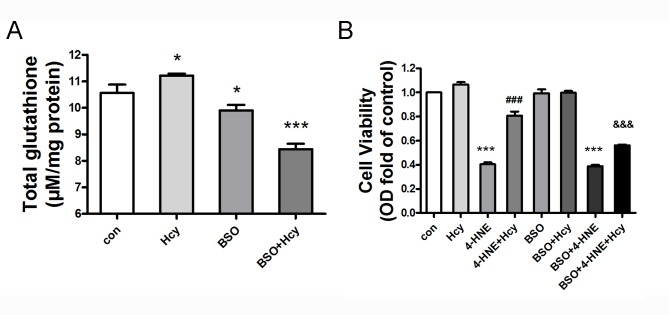Figure 2.
Hcy treatment protects HepG2 cells from 4-HNE-induced cell injury by increasing GSH expression levels. (A) Treatment with the GSH biosynthesis inhibitor BSO abolished Hcy-induced GSH expression in HepG2 cells. HepG2 cells were pretreated with or without 200 µM BSO for 2 h, followed by treatment with 100 µM Hcy for 24 h. Total GSH levels were determined using a GSH Assay kit. (B) Hcy treatment reduced 4-HNE-induced cell injury, and co-treatment with BSO weakened the protective effect of Hcy on 4-HNE-induced cell injury in HepG2 cells. HepG2 cells were pretreated with or without BSO for 2 h, followed by treatment with 100 µM Hcy and/or 70 µM 4-HNE for 24 h. The viability of HepG2 was detected by MTT assay. Values are presented as the mean ± standard error of the mean (n=6). *P<0.05 and ***P<0.001 vs. control or Hcy group; ###P<0.001 vs. 4-HNE group; &&&P<0.001 vs. 4-HNE+Hcy group. 4-HNE, 4-hydroxynonenal; BSO, buthionine sulfoximine; Con, control; GSH, total glutathione; Hcy, homocysteine.

